October 28, 2025 | 04:03 GMT +7
October 28, 2025 | 04:03 GMT +7
Hotline: 0913.378.918
October 28, 2025 | 04:03 GMT +7
Hotline: 0913.378.918
Located in Lam Dong province, Nui Ong Nature Reserve was formerly known as Bien Lac–Nui Ong Nature Reserve. It was established in 1992 and officially renamed with adjusted boundaries in 2001.
The Nui Ong Nature Reserve currently has a total forest area of 24,000 hectares. The reserve is home to tropical evergreen forests, lowland deciduous primary forests, and high-altitude dwarf forests. This diversity of forest types is a key factor contributing to the richness of the reserve's flora and fauna.
According to Mr. Nguyen Van Dung, Director of the Nui Ong Nature Reserve Management Board, a total of 1,070 plant species have been recorded in the reserve. These belong to four major divisions, 49 orders, 149 families, and 560 genera, illustrating a diverse and rich plant ecosystem.
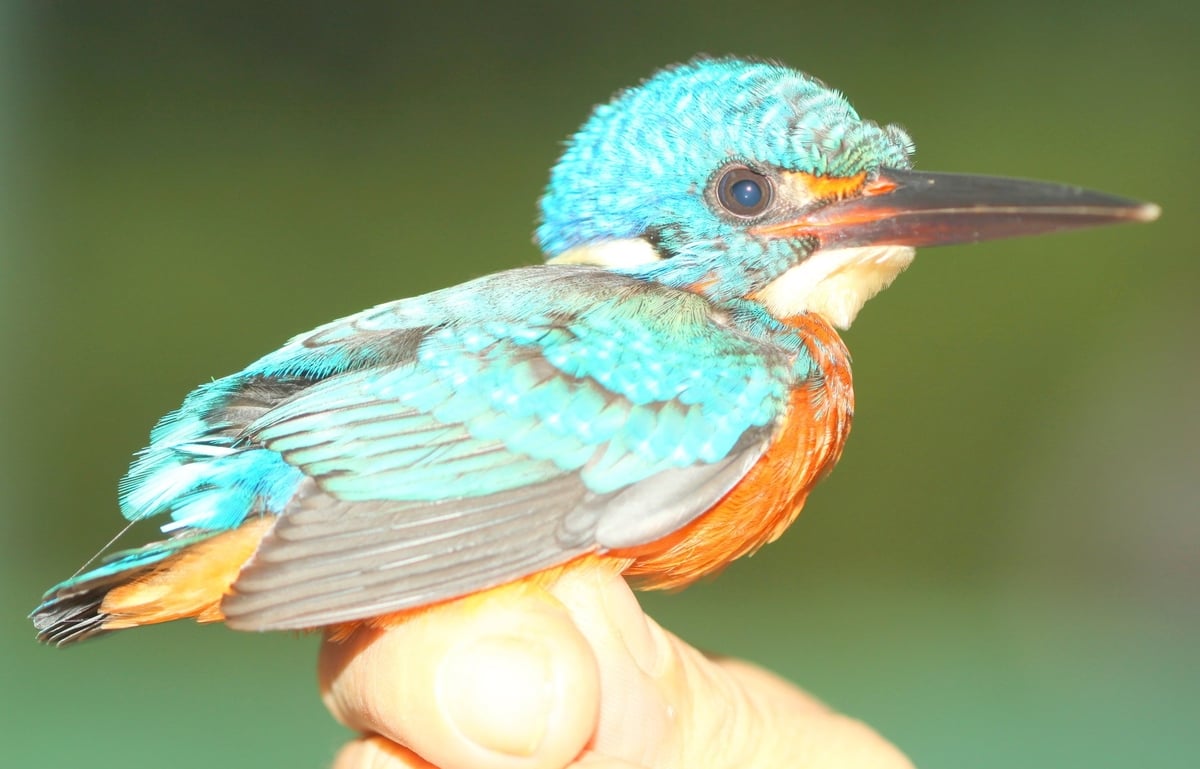
The common kingfisher (Alcedo atthis), also known as the Eurasian kingfisher, is recorded at the Nui Ong Nature Reserve. Photo: Kim So.
Specifically, the Lycopodiophyta division is represented by six species belonging to one order, two families, and three genera. The Polypodiophyta division includes 65 species across three orders, 22 families, and 37 genera, forming an extremely distinctive layer of shrubs and vegetation under the forest canopy.
The Pinophyta division includes 10 species across three orders, three families, and four genera, typically pine species that bring an ancient beauty to the forest landscape.
The Magnoliophyta division accounts for an overwhelming number, with 989 species distributed across 42 orders, 122 families, and 516 genera. This is the most diverse plant division, encompassing the majority of familiar woody plants, shrubs, and herbaceous plant species.
Notably, 33 plant species are listed in the IUCN Red List, and 28 species are included in the Vietnam Red Data Book. This highlights the exceptional importance of Nui Ong in preserving rare and precious plant genetic resources.
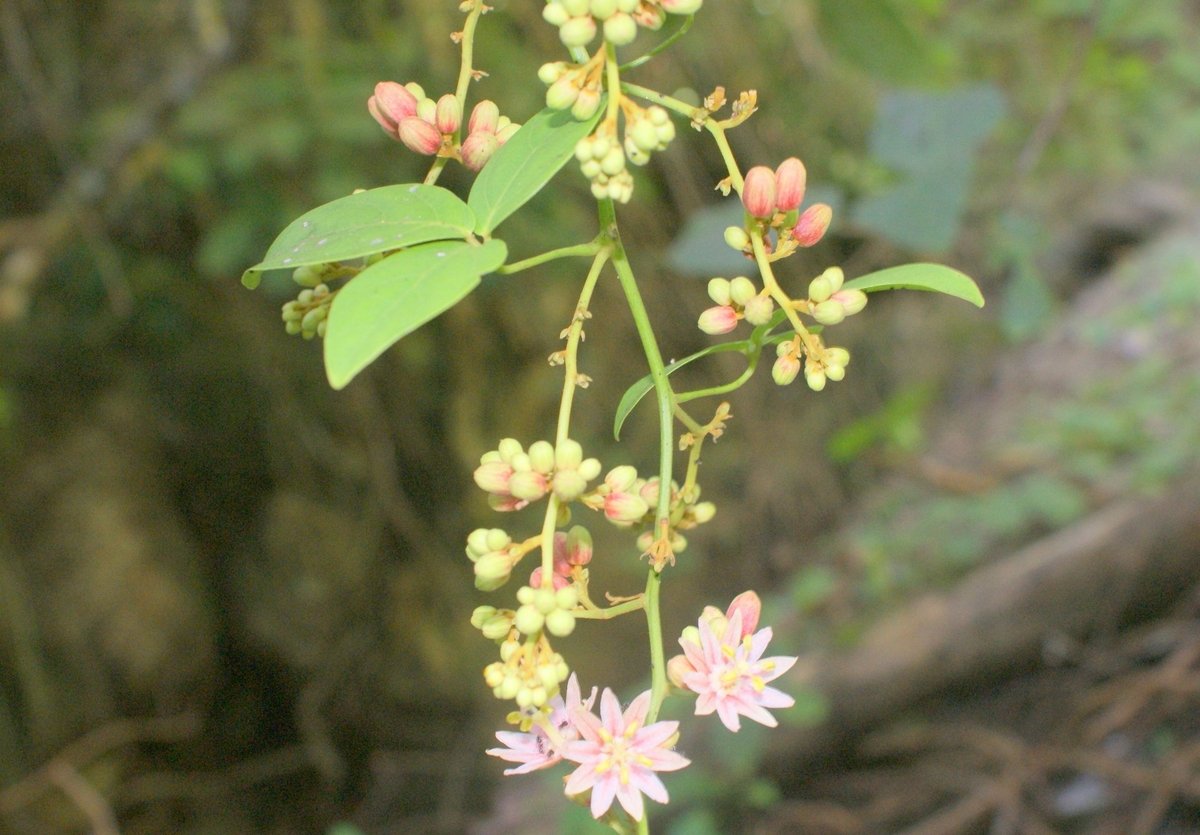
The flora of Nui Ong Nature Reserve is remarkably rich and diverse. Photo: Kim So.
Several rare plant species found in the reserve include rosewood (Dalbergia bariensis), doussie (Afzelia xylocarpa), Baccaurea sylvestris Lour, Pterocarpus macrocarpus, Podocarpus wallichianus Presl, Podocarpus annamensis Gray, Dalbergia cochinchinensis Pierre, Aquilaria crassna Pierre, Mesua ferrea, Erythorophleum fordii Oliv., and Xylia xylocarpa var. kerrii.
"A highlight of Nui Ong's flora is its unique blend of Indochinese and Malaysian factors, characteristic of the Indo-Malayan floristic region, while also exhibiting influences from both African and Australian flora. Moreover, the presence of several species belonging to ancient plant families from both subtropical and tropical floristic regions further enhances the scientific value and diversity of the flora here. All these factors affirm that Nui Ong is not only an important protection forest but also the nation's valuable center for scientific research and biodiversity conservation," said Mr. Dung.
In addition to its rich flora, the fauna of Nui Ong Nature Reserve is also extremely diverse and valuable. Studies have recorded 46 mammal species, including 25 listed in the IUCN Red List and 32 in the Vietnam Red Data Book. The reserve is the shelter to numerous rare primate species such as the pig-tailed macaque (Macaca leonina), black-shanked douc langur (Pygathrix nigripes), and yellow-cheeked crested gibbon (Nomascus gabriellae), along with other characteristic mammals like the binturong and the black giant squirrel.
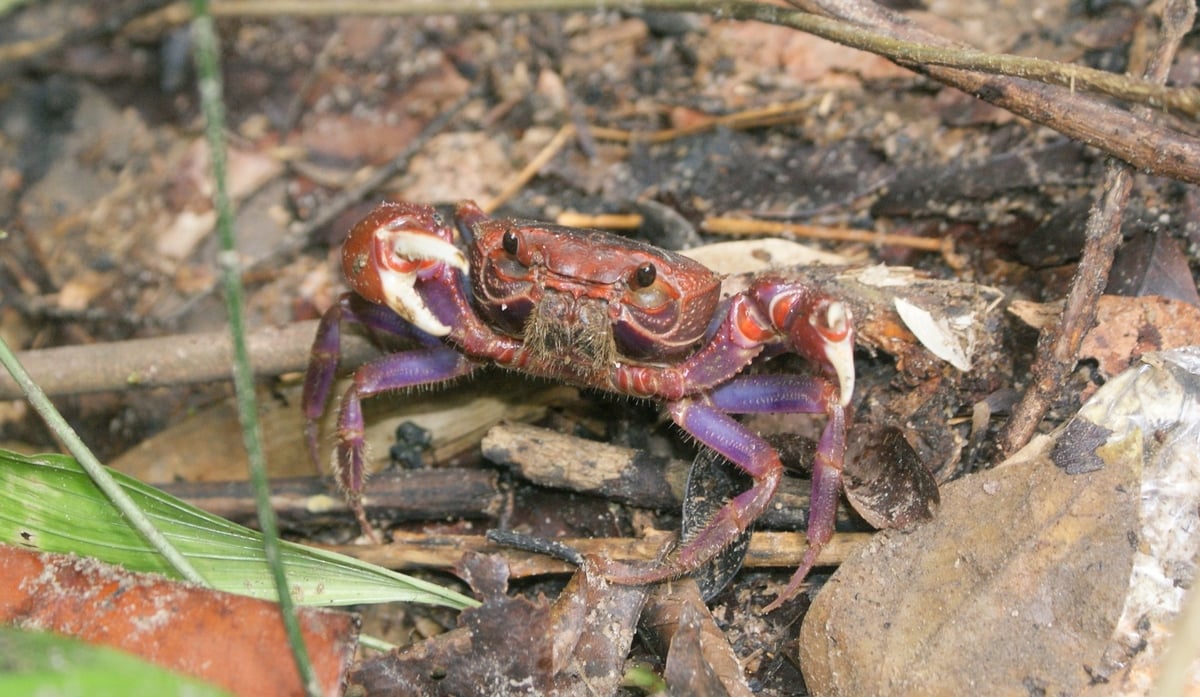
The vampire crab (Geosesarma sp.) is a land-dwelling crab species found in tropical moist forests. Photo: Kim So.
A total of 165 bird species have been recorded, including eight listed in the Vietnam Red Data Book and six in the IUCN Red List. Particularly, many rare and precious bird species with high conservation value are strictly protected in the reserve, such as the Lopura diardi, peacock, great hornbill, and leptoptilus argala.
Reptiles and amphibians also make an important contribution to Nui Ong's biodiversity, with 20 amphibian species and 22 reptile species identified. Particularly symbolic reptile species that are facing the risk of extinction include the gekko gecko, reticulated python, giant Asian pond turtle, and elongated tortoise.
To protect and enhance the value of this rich and diverse ecosystem of flora and fauna, Mr. Dung noted that in recent times, the Nui Ong Nature Reserve Management Board has directed specialized forest protection forces, along with contracted forest protection households, to regularly conduct patrols and strict monitoring.
These activities are maintained continuously, regardless of weekends, holidays, or the Tet Lunar New Year, even during nighttime hours, to promptly detect and prevent any acts of forest encroachment.
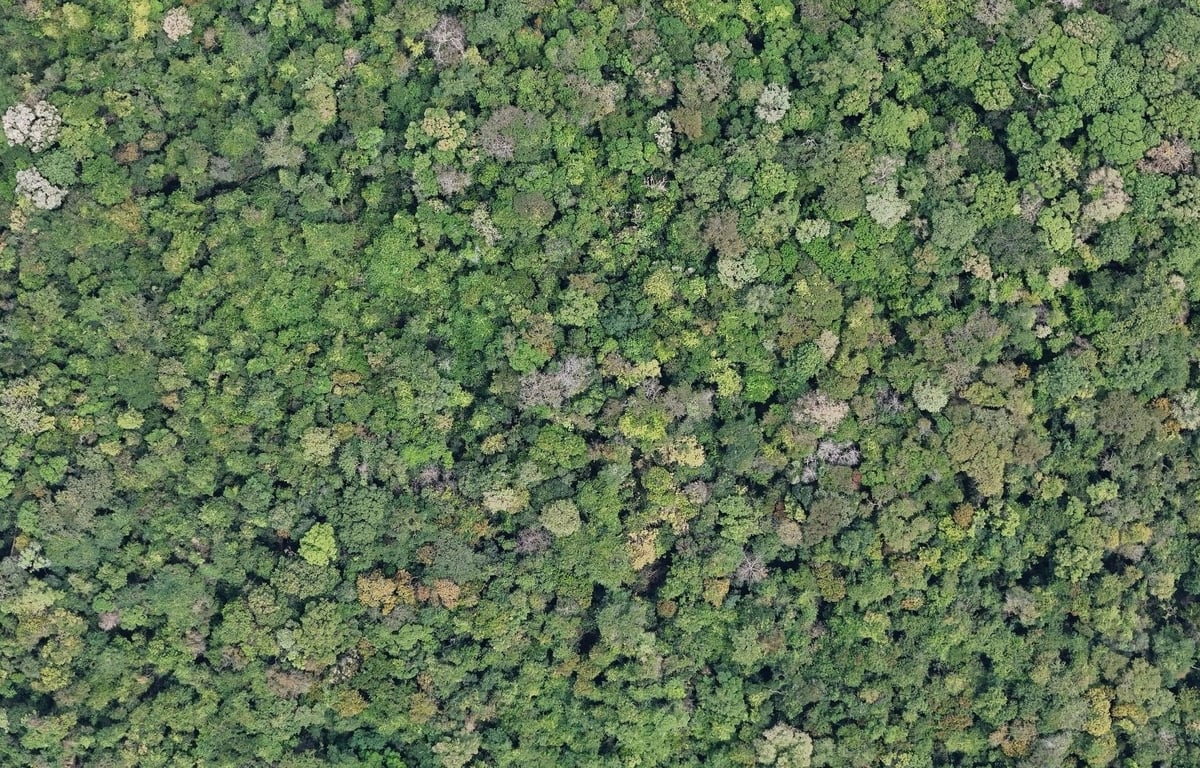
Aerial view of Nui Ong Nature Reserve. Photo: Kim So.
The Management Board also works closely with ranger forces, local governments at all levels, and adjacent units to ensure effective forest management, protection, and development, especially in handling violations of the Law on Forestry.
"We frequently organize raids and crackdowns on illegal logging and wildlife poaching activities, significantly reducing pressure on forest resources. We also conduct inspections of forest protection stations to promptly address shortcomings and improve operational effectiveness. Most importantly, we have stepped up efforts to raise public awareness and mobilize local communities to participate in forest protection and development. Once people clearly understand the value of forests, they become essential partners in the conservation mission," Mr. Dung emphasized.
Thanks to these tireless efforts, the Nui Ong Nature Reserve has shown many positive signs. Specifically, forest coverage has remained stable at over 90%. Rare and endemic plant and animal species within the reserve have been relatively well conserved, with signs of recovery. Illegal hunting and deforestation have been significantly brought under control.
Despite its achievements, Nui Ong Nature Reserve still faces considerable challenges due to growing pressures from local livelihood demands. These are demands for forest products and agricultural land among local communities, while the forest protection force remains understaffed.
Several prominent violations have yet to be handled in a timely manner. Prolonged investigations and delays in identifying offenders have reduced the deterrent effect of legal enforcement.
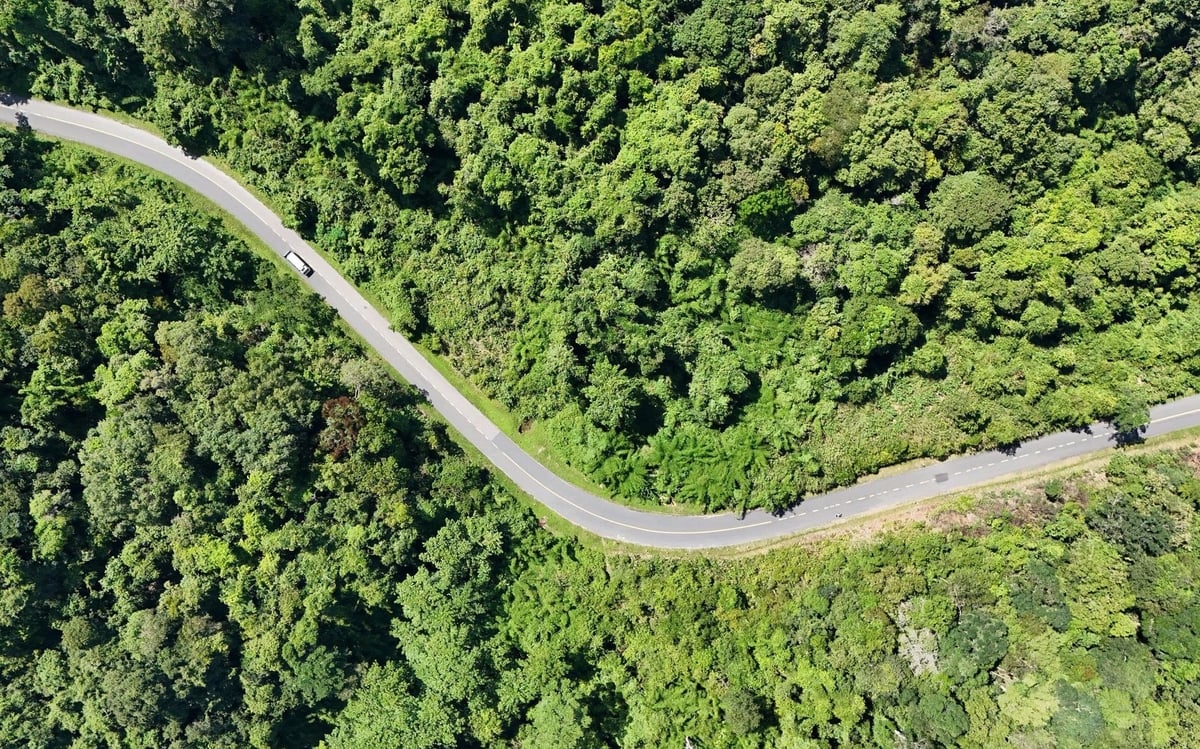
The forest of Nui Ong Nature Reserve must be preserved and developed. Photo: Kim So.
Facilities and equipment serving forest management, protection, and development, especially fire prevention and firefighting, remain inadequate. Fire suppression still largely relies on manual methods during outbreaks.
The specialized forest protection team is significantly insufficient relative to the management scale. Inadequate salaries and a lack of essential equipment have significantly affected the effectiveness of their work.
Thus, to ensure the sustainable development of Nui Ong, known as the "green lung" of the region, the Nui Ong Nature Reserve Management Board emphasized the urgent need for special attention and adequate investment from all levels of government. Among the key solutions, the timely formulation and implementation of specific mechanisms and policies for investment in biodiversity conservation are deemed essential and important. Only then can Nui Ong fully promote its immense value, not only for Lam Dong province but for the entire nation.
Translated by Thu Huyen

(VAN) The Integrated Plant Health Management (IPHM) helps farmers in Quang Ngai increase rice production efficiently and sustainably.

(VAN) Developing low-emission cultivation technology packages, MRV system, strengthening multi-stakeholder cooperation are to realize the goal of low-emission crop production.
/2025/10/23/5928-2-194850_964.jpg)
(VAN) The 'Regenerative cocoa production to support livelihood development in Vietnam' (ReCoPro) project marks an important step toward sustainable cocoa production.

(VAN) Reducing antibiotic dependence in livestock production helps protect public health, enhance food safety, and promote sustainable agricultural development.

(VAN) Experts describe Viet Nam as a 'policy laboratory' within ASEAN, where new agroecological, green finance, and risk-management initiatives are being piloted before wider regional adoption.

(VAN) Limiting rice straw burning and reusing agricultural by-products as materials or fertilizers not only improves soil health but also helps clean the air.

(VAN) ASSET delivers long-term vision and strategy, innovative models, learning networks, policy impact, and measurable environmental benefits.